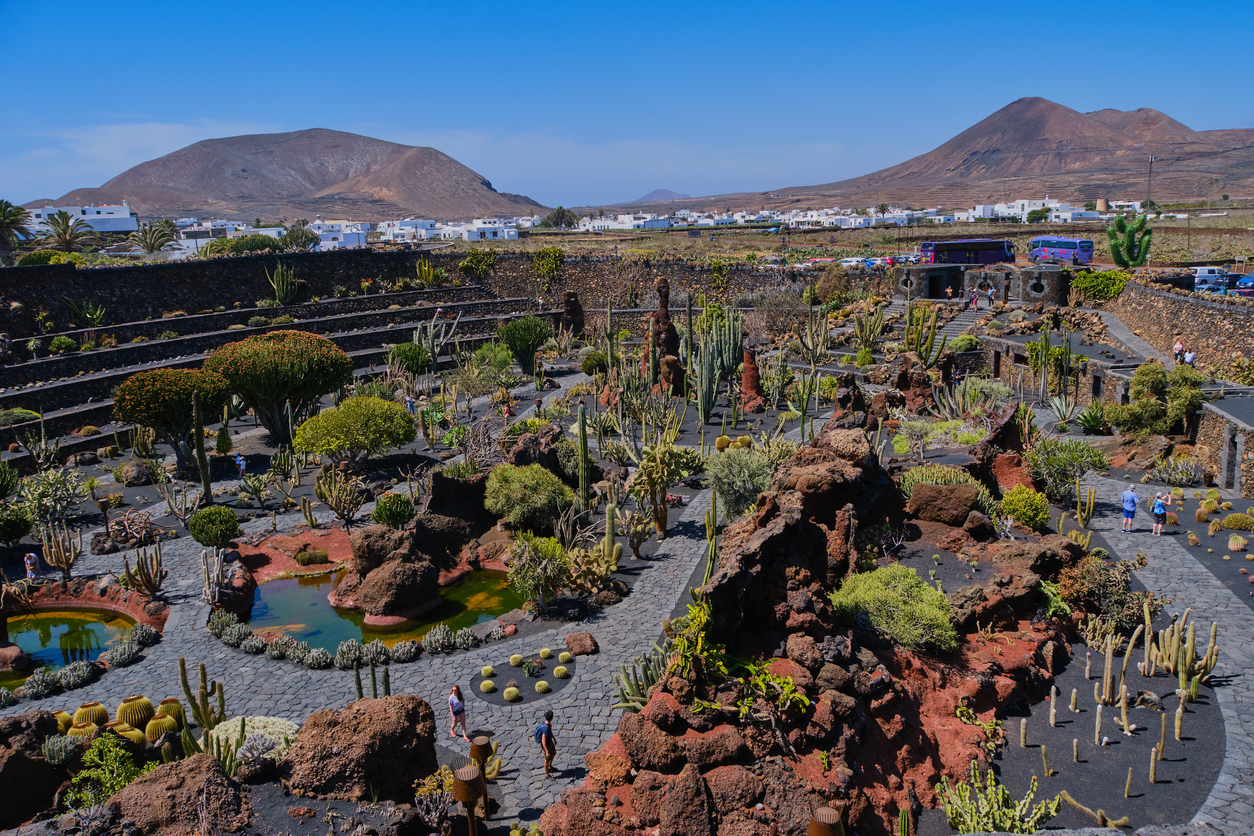 BremecR
BremecR
The Canary Islands have been marked by the legacy of one of its most beloved native sons, the 20th-century architect, artist, and conservationist César Manrique (1919-1992), who besides creating marvelous buildings and structures throughout his native Lanzarote as well as the other islands also was a major force in keeping Lanzarote free of the reckless, high-rise development which has marred many holiday destinations. So that’s why this years lanzaroteños have been happy to mark the 30th anniversary of one of his enduring environmental projects – and his last. And here’s why the Jardín de Cactus (Cactus Garden) is so special.
Located in the village of Guatiza in the northeast of this northernmost and easternmost of the Canaries, this 5,000-square-metre (1¼-acre) onetime volcanic-rock quarry is a 15-minute drive from both capital Arrecife and the island’s popular Costa Teguise resort area. Designed in the shaped of an amphitheatre and crowned by a whitewashed windmill, it’s home to 4,500 specimens of 450 species – not just the these islands but from across five continents.
 Claudia Nass
Claudia Nass
Pathways are made of volcanic rock slabs which guide you to wander, including up several tiers mimicking stadium seating, but for cacti instead of people. In the centre you’ll find a collection of slender, towering cacti; plump, prickly spheres; and cacti that look more like trees – all of course in various hues of green, and labeled by location, botanical name, and common name. The kaleidoscope of shapes and sizes; beautiful flowers; sharp needles; prickly spines; and fuzzy leaves will leave you amazed at vast and varied the world of cacti is.
 CACT Lanzarote
CACT Lanzarote
You can relax and enjoy the views of the impressive garden at the round, volcanic-rock café’s covered terrace over a drink or tapa (or how about a “cactus burger” – a mix of prickly pear, potatoes, onions, and corn, served with goatsmilk-youghurt sauce and smoked cheese?). There’s also a similarly round gift shop (below) that blends into the landscape where you can browse for various cactus-inspired gifts such as mugs, magnets, and tote bags, along with local handicrafts and cactus-derived cosmetics, creams, and other products.
You can also climb the narrow stairs for a higher view of the garden and also see items used in the milling of gofio, the staple of Canarian cuisine, which you can sample in some dishes in the restaurant, such as gofio mousse.
 CACT Lanzarote
CACT Lanzarote
Back in the day, this quarry was where volcanic ash and sand were extracted to lay over soil in vineyards and farms as a way to retain moisture from humidity and dew – critical for local agriculture. And its location in the northern center of the island was specifically chosen because it’s one of the main cultivation areas of prickly pear, grown to produce cochineals, insects which produce the natural dye known as carmine (deep red), used for food colouring and textiles.
César Manrique was an environmentalist visionary long before it became fashionable, and let natural landscapes and resources inspire and guide his designs. He also had the foresight to realize how tourism could help lift Canarians out of poverty by creating jobs – yet simultaneously the wisdom to know that overtourism could destroy the ecosystem of the very island he adored and referred to as his muse. All of his works put the environment first, allowing the natural landscape to dictate and highlight what is possible.
 Fominayaphoto
Fominayaphoto
Other Manrique landmarks on Lanzarote include the beautiful Mirador del Rio, a viewing area on the top of a cliff in Risco de Famara, 23 minutes up the coast, affording incredible views out to the tiny island of La Graciosa. Just 15 minutes north, in the Haría district where Manrique once lived, Jameos del Agua (above) is a complex of passageways, stairs, a museum, saltwater pool (with tiny, blind white crabs endemic to this spot), bar/restaurant, and a 500-seat auditorium with wonderful acoustics, all built within a volcanic lava tube and garnished outside by a pond and palm grove. And just 15 minutes inland from Jameos, you can take a guided tour of Cuevas de los Verdes, a kilometre-long (⅔-mile) stretch of a another, 7km volcanic tunnel, designed by Manrique along with fellow architect Jesús Soto with building stairs and dramatic lighting to highlight the cool rock formations and colours.
It all adds a remarkable other dimension to a classic sunsplashed beach holiday, as well as highlighting the importance of the environment – more vital today than ever before. Highly recommended!
Based in the San Francisco Bay Area, Lauren David writes about travel, lifestyle and food. When she’s not writing, you’ll find her experimenting in the kitchen, gardening, dancing or daydreaming about her next adventure.

